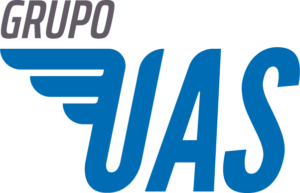Comparison with the previous regulation
In order to understand the EU Regulations and the changes that have taken place, we will briefly review the previous regulations applicable in Spain on the use of RPAS. Specifically, the rule that established the use of these aircraft until the application of the EASA (European Aviation Safety Agency) regulations was RD 1036/2017, together with other fundamentals included in RD 1180/2018, which develops the Air Regulations and common operational provisions for navigation services and procedures.
It should be borne in mind that these regulations did not derive from an explicit risk assessment nor in accordance with the existing UAS technology, based on mere restrictions of use in which for most environments or activities the authorization of the authority, in our case the State Aviation Safety Agency, was required.
Fortunately for the sector, on December 31, 2020 the EU Regulations will be implemented, specifically the Delegated Regulation 945/2019 that establishes technical requirements for UAS, and the Implementing Regulation 947/2019, the latter being the one that establishes the “use” of UAS in the different operations.
We say “fortunately”, because these Regulations are born from the need to integrate UAS and their operations in the aeronautical and commercial sector. EASA, following mandatory risk assessments, materialized these regulations to implement and circulate UAS technology, which is becoming safer and more applicable.
To further develop and deepen the understanding of the regulations, it is necessary to recognize how the regulations interact.
Class Markings
Delegated Regulation 945, as we have already said, establishes technical requirements for UAS, which through different risk assessments (performed by the EU authority EASA), define certain technical characteristics and standards that, once implemented by the manufacturers, can be considered as compliant with the presumption that they are manufactured under the requirements set by the Regulations themselves, these standards are called “Class Marking”.
The aforementioned Class markings are defined in Delegated Regulation 945, to which we will make a brief mention of each of them:
- Class C0 up to 250 gr
- Class C1, up to 900 gr
- Class C2, up to 4 kg
- Class C3, up to 25 kg
- Class C4, up to 25 kg
- Class C5, up to 25 kg
- Class C6, up to 25 kg
A very important issue, which sometimes leads to misunderstanding, is to think that once the proposed transitional periods are over, UAS that do not have Class marking (prior to EASA Regulations) will no longer be able to operate, and this is not so. The purpose of UAS with Class marking is that the operator does not need to perform a “risk assessment” of the operations he intends to perform, and can perform them simply by complying with the conditions of the proposed categories and with the UAS that have the aforementioned Class marking.
Training and new regulations
Implementing Regulation 947, in addition to structuring operations, also establishes the specific training that operators/pilots must have for the execution of operations.
Pilot training and certification is no longer the sole responsibility of the previously known flight schools (Atos and light aviation schools).
The training is divided into two parts, theoretical training and practical training, the former being “for the moment” the responsibility of being provided by the competent authorities in aeronautical safety, in our case Spain the EASA.
On the other hand, for the practical training of pilots, with the new regulations appear the “recognized and designated entities” qualified to carry out the practical training and certification of remote pilots, provided that they comply with the relevant standards and declarations proposed by the Regulations. It is expected that, in the future, the Designated Entities will be competent to provide theoretical training and certification to remote pilots.
Going deeper into the EU Implementing Regulation 947 EU, by means of the aforementioned risk assessments, it establishes different categories depending on the assessed risk, Open, Specific and Certified.
Each of the categories establishes a series of conditions that, if fulfilled by the operator, are presumed to be protected by them.
The Open Category, defined as low risk, is not subject to any prior authorization or operational declarations and is divided into 3 subcategories, A1, A2 and A3, sharing certain limitations.
We could mention the most excluding ones that could be, that the operations are performed with aircraft with class marking (C0, C1, C2, C3, and C4), within the pilot’s line of sight (VLOS), it is not allowed to fly over concentrations of people, at a maximum flight altitude of 120 mt and also, that no material is transported or dropped.
The Specific Category already includes higher risk operations, which do not comply with the conditions of the open category, thus requiring the operator to perform the specific risk assessment for the operations to be performed.
These operations require an Operational Authorization (AO) from the competent authority in aeronautical safety matters (in our case in Spain, the EASA), which, after assessing such assessment and the mitigations applied by the operator, will issue an AO that will allow him to perform such operations under the agreed conditions.
However, although the Specific Category, so called because it contains higher risk operations, there are also several “scenarios” where the risk assessment has already been performed by EASA, called “Standard Scenarios”, STS, where, declaring that the operator will comply with certain conditions, he can perform such operations without having to perform any risk assessment, similar to the open category; An important difference is that in order to operate in these scenarios it is required to make an operational declaration, claiming that all the proposed conditions will be met; in addition, these scenarios are also required to be performed with UAS with Class marking (C5 and C6).
An important particularity to take into account in this category (Specific), in addition to the standard scenarios proposed by the Regulation, “other” risk assessments already predefined by the EASA authority have been defined, called PDRAs, which we could define as “extended” standard scenarios, with the difference that these, in addition to not requiring that they be performed with UAS with Class marking, do require the audit and authorization of the competent authority (EASA in our case in Spain).
As a last category, the Certified Category is proposed, containing high risk operations and with a regulatory regime similar to traditional manned aviation.
These are the most significant changes with respect to the previous regulations. The constant evolution of technology makes it necessary to renew the regulations governing its use, therefore, it is essential to have an aeronautical drone consulting company that keeps the client informed at all times to successfully achieve their projects.
A drone pilot certificate is required. The type of certificate will depend on the category in which the flight will be performed.
It is not necessary that the drone is registered unless it is certified, but in any case it is necessary that the pilot is registered in AESA. This registration is valid for 5 years.
No, it is no longer necessary to carry an identification plate on the drone. However, it is mandatory to carry the operator registration number on the drone. The Royal Decree 2019/947 does not indicate a common form for this, so the operator can choose to put stickers, vinyl, QR or even write it with a marker pen.
A permit is required to fly the drone as long as it weighs more than 250 grams. This regardless of whether it is for professional or recreational use.
If you have more questions, consult our aeronautical drone consulting services.



